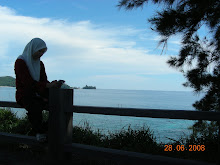Abdominal Calcifications
1. Rt upper quadrant
- usually d/t kidney stones or gallstones
- if multiple, very close to each other and lie outside the normal expected kidney outline..that will be gallstones..
-take Rt Posterior Oblique view....Gallstones will rotate anteriorly and not move with the outline of the kidney..or
- do ultrasound study.
- Gallstones USG -- pain and jaundice, assess the common bile duct and internal architecture of the liver and pancreas.
2. Lt Upper Quadrant
- essentially always related to the spleen.
- Multiple small punctate as the result of histoplasmosis
- Serpiginous or rounded - related to splenic artery calcification or splenic artery aneurysm
3. Chronic pancreatitis
- spotted or mottled calcification, in horizontal distributions over the vertebral bodies of L1 and L2, extending to the left
- may seen or may not be seen..
4. Mesenteric Lymph Nodes
- as a result of previous infection
- rounded or popcorn shaped calcifications in the right midabdomen
5. Appendices
- stone : over the Rt side of the sacrum
- Appendicitis : bubbly gas appearance (abscess) in the Rt lower quadrant or a focal ileus (dilatation) small bowel d/t inflammatory reaction
6. Phleboliths
- in elderly
- rounded in the lower half of the pelvis, 1cm or less in diameter
- calcifications within pelvic venous structures
- lucent or dark center
7. Uterine fibroids
- very similar to mesenteric nodes.
- suprapubic position and centrally
- quite large and spectacular
8. Male
- Two types : i) Prostate - immediately behind the symphysis pubis
ii) Vas deferens - rare, looks like a little set of antlers in the middle of the pelvis,
projecting slightly above the symphysis pubis
- almost indicates the patient had diabetes.
SEKIAN...=)
Subscribe to:
Post Comments (Atom)










No comments:
Post a Comment